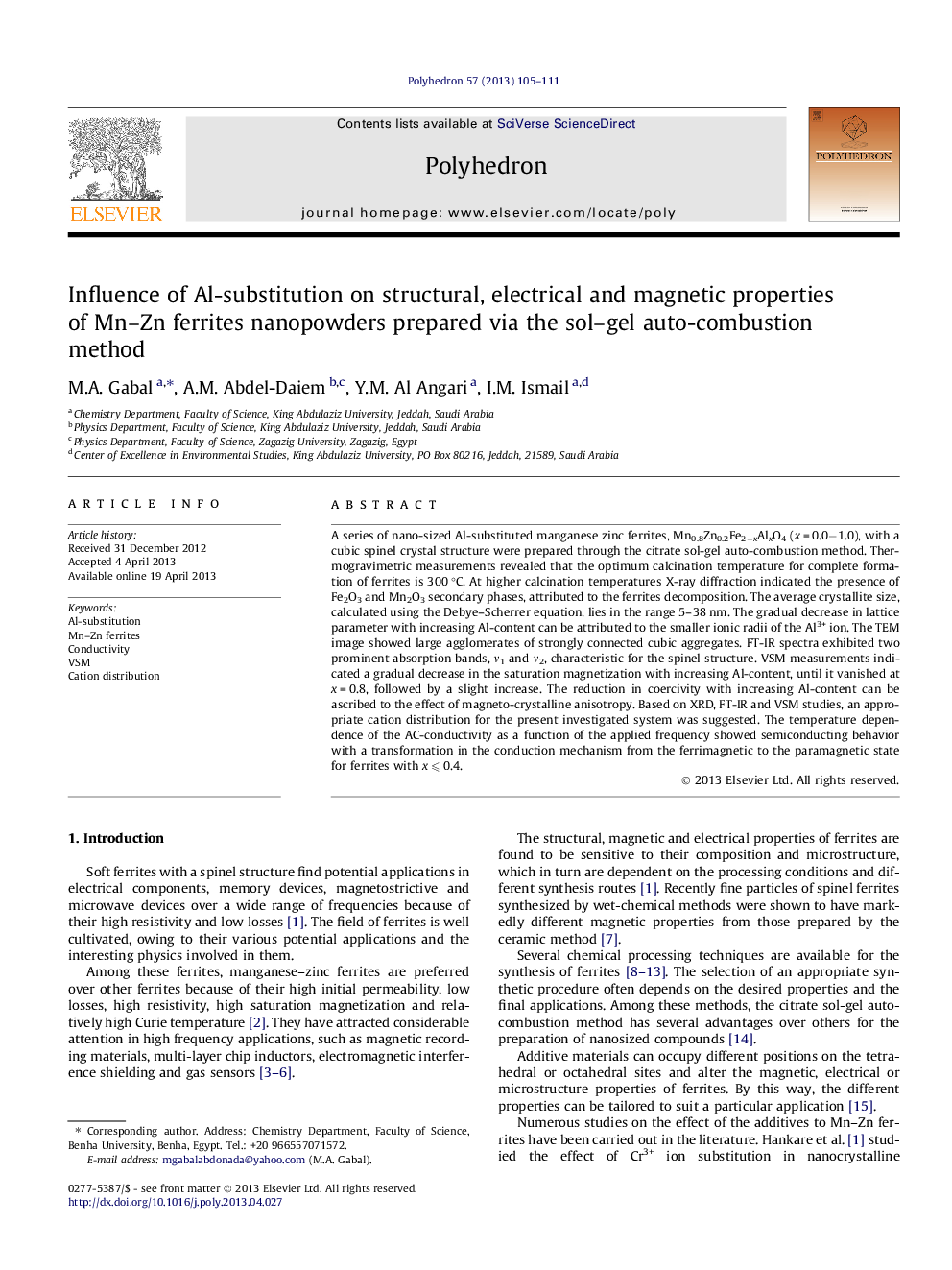| Article ID | Journal | Published Year | Pages | File Type |
|---|---|---|---|---|
| 1338269 | Polyhedron | 2013 | 7 Pages |
A series of nano-sized Al-substituted manganese zinc ferrites, Mn0.8Zn0.2Fe2−xAlxO4 (x = 0.0−1.0), with a cubic spinel crystal structure were prepared through the citrate sol-gel auto-combustion method. Thermogravimetric measurements revealed that the optimum calcination temperature for complete formation of ferrites is 300 °C. At higher calcination temperatures X-ray diffraction indicated the presence of Fe2O3 and Mn2O3 secondary phases, attributed to the ferrites decomposition. The average crystallite size, calculated using the Debye–Scherrer equation, lies in the range 5–38 nm. The gradual decrease in lattice parameter with increasing Al-content can be attributed to the smaller ionic radii of the Al3+ ion. The TEM image showed large agglomerates of strongly connected cubic aggregates. FT-IR spectra exhibited two prominent absorption bands, ν1 and ν2, characteristic for the spinel structure. VSM measurements indicated a gradual decrease in the saturation magnetization with increasing Al-content, until it vanished at x = 0.8, followed by a slight increase. The reduction in coercivity with increasing Al-content can be ascribed to the effect of magneto-crystalline anisotropy. Based on XRD, FT-IR and VSM studies, an appropriate cation distribution for the present investigated system was suggested. The temperature dependence of the AC-conductivity as a function of the applied frequency showed semiconducting behavior with a transformation in the conduction mechanism from the ferrimagnetic to the paramagnetic state for ferrites with x ⩽ 0.4.
Graphical abstractTEM image of the precursor calcined at 300 °C with x = 0, showing large agglomerates of strongly connected cubic aggregates.Figure optionsDownload full-size imageDownload as PowerPoint slide
